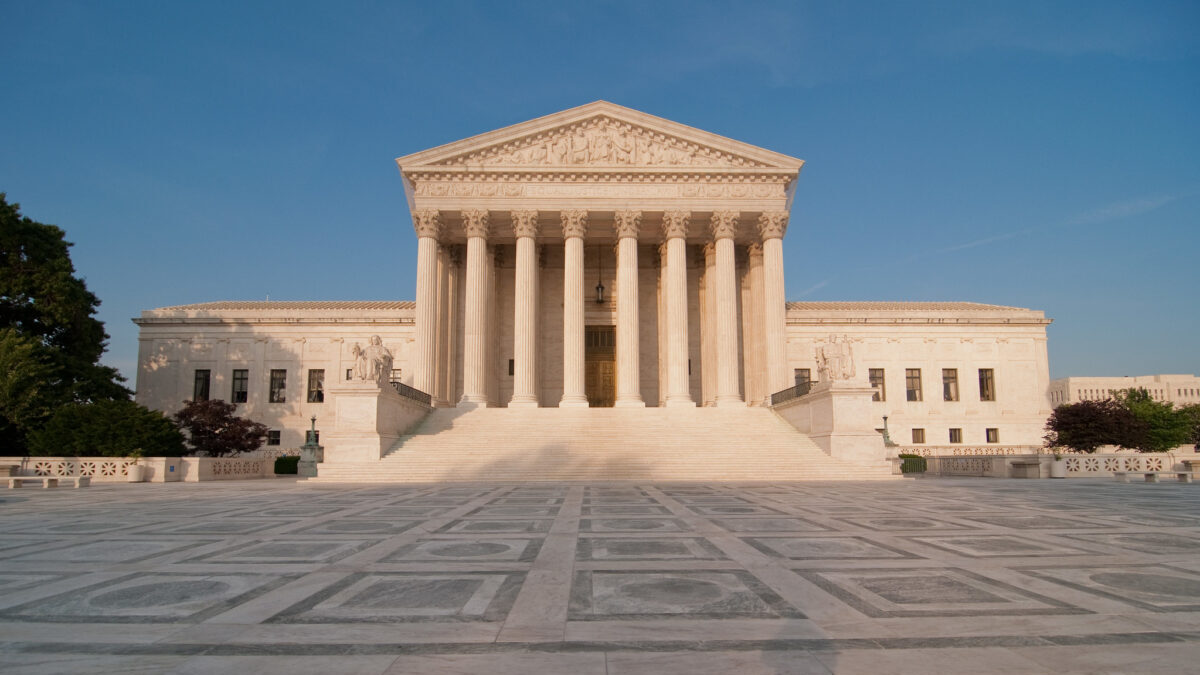Supreme Court ends Clean Water Act’s Wetlands Protections.
Supreme Court Removes Protections from Wetlands
OAN’s Brooke Mallory
1:25 PM – Thursday, May 25, 2023
The Supreme Court came to a decision on Thursday, which removes protections from wetlands that are cut off from larger bodies of water, making it more difficult for the federal government to control water pollution.
The High Court’s Republican majority has limited the applicability of environmental regulations for the second time in recent years.
The court ruled in favor of an Idaho couple who desired to construct a home close to Priest Lake, in the state’s panhandle, boosting property rights over concerns regarding clean water. Federal officials had declared a soggy area of the property as a wetland and demanded that they obtain a permit before construction, however, Chantell and Michael Sackett opposed this request.
In a 5-4 decision, the court stated that wetlands can only be subject to the Clean Water Act’s regulations if they have a “continuous surface connection” to larger regulated bodies of water. Such a connection did not exist on the Sacketts’ property.
The court dismissed Anthony Kennedy’s 17-year-old ruling, which had allowed regulation of wetlands with a “significant nexus” to larger waterways. Kennedy’s ruling had served as the benchmark for determining whether wetlands were covered by the historic environmental law of 1972. The standard was criticized by opponents for being both ambiguous and impracticable.
Environmentalists predicted that by limiting the law’s application, more than half of the nation’s wetlands would lose their protections.
Reaction to the Decision
“The Supreme Court ripped the heart out of the law we depend on to protect American waters and wetlands. The majority chose to protect polluters at the expense of healthy wetlands and waterways. This decision will cause incalculable harm. Communities across the country will pay the price,” said Manish Bapna, the CEO of the Natural Resources Defense Council.
All nine judges concurred in the decision on Thursday that the wetlands on the Sacketts’ property are not protected by the legislation.
Only five justices, however, came to an agreement in the opinion that established a new standard for determining whether wetlands are subject to the Clean Water Act. In the final significant wetlands case before the Supreme Court in 2006, Chief Justice John Roberts, Justice Clarence Thomas, and Alito would have embraced the more stringent criteria. Justices Amy Coney Barrett and Neil Gorsuch joined them on Thursday.
The three Democrat justices on the court and the Republican justice Brett Kavanaugh claimed that their colleagues had changed the law.
The court’s “new and overly narrow test may suddenly push wetlands that have been long regulated and accepted to be regulable outside the agencies’ regulatory authority,” according to Kavanaugh.
He named two initiatives that would be affected by the decision, including efforts to protect Chesapeake Bay and to manage flooding on the Mississippi River.
The majority’s rewrite of the law, according to Justice Elena Kagan, was “an effort to cabin the anti-pollution actions Congress thought appropriate.”
Kagan had referred to the ruling from the previous year that restricted the Clean Air Act’s ability to regulate greenhouse gas emissions.
She noted that the court had appointed “itself as the national decision-maker on environmental policy.” Sonia Sotomayor and Ketanji Brown Jackson, two of Kagan’s Democrat colleagues, contributed to her article.
The Sacketts’ Legal Battle
Two years after purchasing a 0.63-acre plot of land close to Priest Lake for $23,000, the Idaho-based Sacketts duo began construction on a three-bedroom house. In order to prepare for the construction, they had filled a portion of the property, which was described in an appellate judgement as a “soggy residential lot,” with rocks and soil. However, when EPA representatives arrived, the couple immediately stopped the work.
The Idaho pair also won an earlier stage of their Supreme Court legal battle.
The EPA’s judgment that a portion of the property constituted wetland, 300 feet from the lake and 30 feet from an unidentified river that drains into the lake, was upheld by the federal appeals court in San Francisco in 2021.
Similarly, years before, the Sacketts’ own consultant had reportedly informed them that their property had wetlands.
Stay informed! Receive breaking news blasts directly to your inbox for free. Subscribe here. https://www.oann.com/alerts
" Conservative News Daily does not always share or support the views and opinions expressed here; they are just those of the writer."





Now loading...